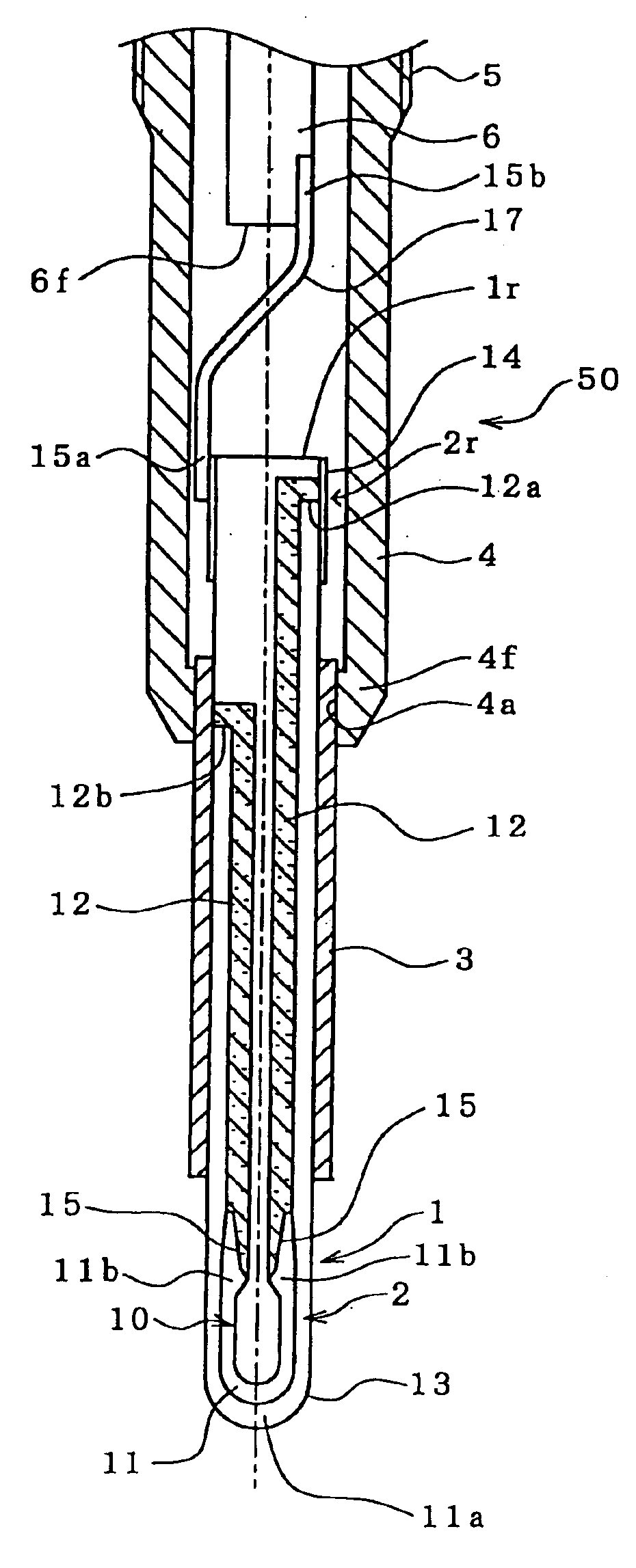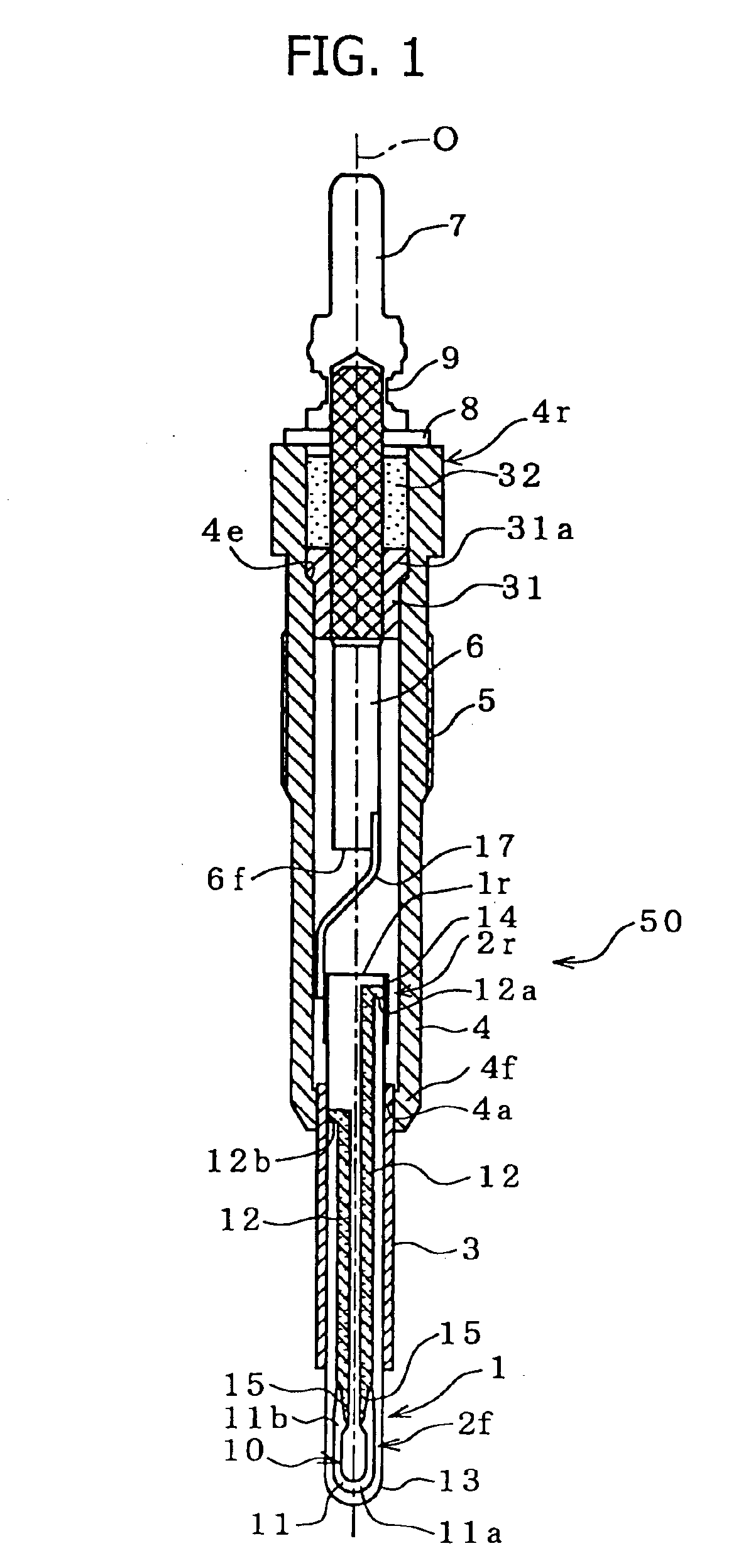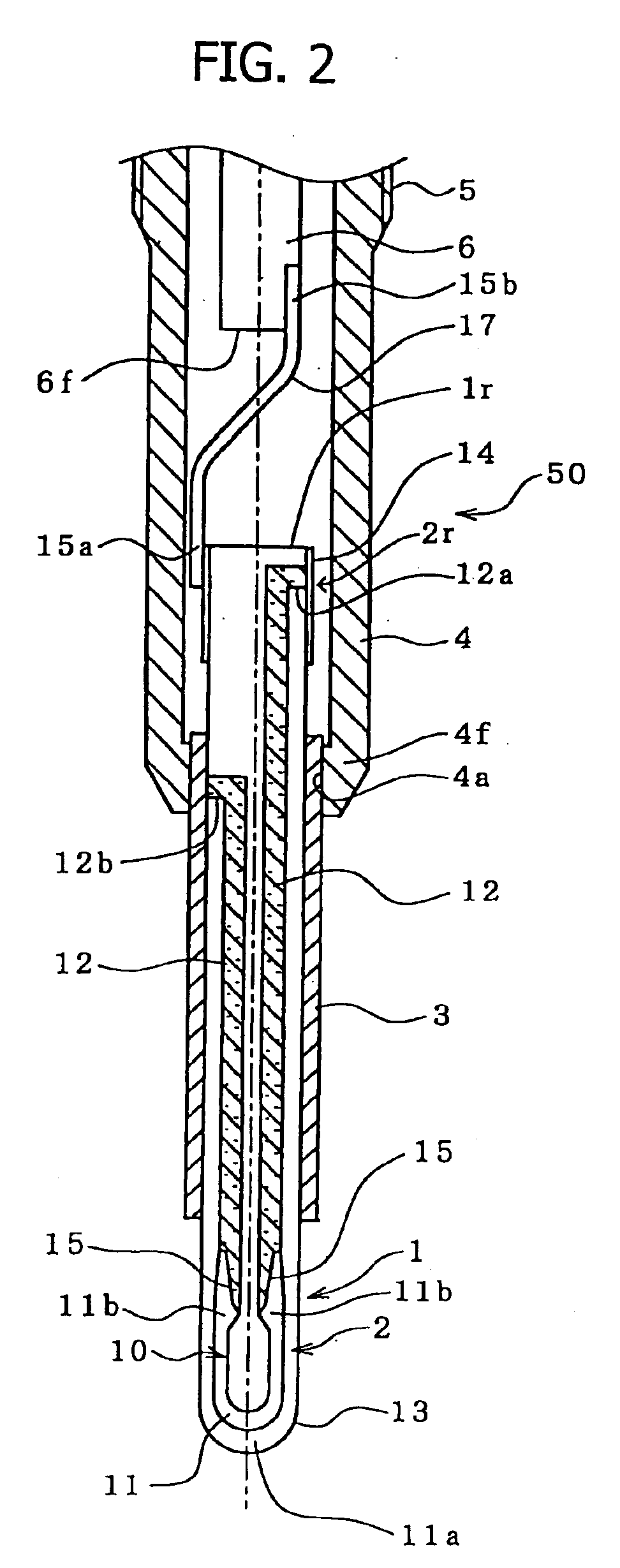Glow plug and method of manufacturing the same
a technology of glow plugs and plugs, which is applied in the field of glow plugs, can solve the problems of potential instability of electrical connections and impair the durability of ceramic heaters, and achieve the effects of suppressing an increase in contact resistance, and ensuring electrical connection and high reliability
- Summary
- Abstract
- Description
- Claims
- Application Information
AI Technical Summary
Benefits of technology
Problems solved by technology
Method used
Image
Examples
experimental example 1
[0061]The first and second terminal rings 14 and 3 were fabricated by use of SUS630. The first terminal rings 14 had the following dimensions: thickness: 0.25 mm; axial length: 0.5 mm to 6 mm (Experimental Example A: 6.0 mm; Experimental Example B: 2.8 mm; Experimental Example C: 2.2 mm; Experimental Example D: 1.3 mm; Experimental Example E: 0.8 mm; and Experimental Example F: 0.5 mm); and inside diameter d1: 3.4 mm. The second terminal rings 3 had the following dimensions: thickness: 0.85 mm; axial length: 20 mm; and inside diameter d1: 3.4 mm. An Ni strike plating layer was formed on the inner circumferential surfaces of the first and second terminal rings 14 and 3, which are to be fitted to the ceramic heater 1, by use of a known chloride bath. Subsequently, a Cu plating layer was formed on the Ni strike plating layer by use of a sulfate bath, thereby forming the metal layer 41 having a thickness of 3.2 μm.
[0062]The thus-fabricated second terminal ring 3 was fixed by use of a ji...
experimental example 2
[0068]Next, measurement similar to that of Experimental Example 1 was carried out for the case where Au, which is the lowest in ionization tendency, was plated on the inner circumferential surface of a metal fitting member. FIG. 10 also shows the measurement results (2A to 2F).
[0069]Comparison between the above measurement results and the test results of Experimental Example 1 reveals that the lower the ionization tendency of the metal layer 41, the greater the effect of suppressing an increase in contact resistance at a contact portion between the metal layer 41 and a heater terminal. As is apparent from FIG. 10, Ni and Ag (Ni: 3A to 3F; Ag: 4A to 4F), which are lower than Ni in ionization tendency, exhibit contact-resistance-increase-suppressing performance proportional to the degree of ionization tendency. Specifically, in comparison under the same conditions of use, the lower the ionization tendency, the longer the life; and even in use at higher temperatures, durability can be ...
PUM
 Login to View More
Login to View More Abstract
Description
Claims
Application Information
 Login to View More
Login to View More - R&D
- Intellectual Property
- Life Sciences
- Materials
- Tech Scout
- Unparalleled Data Quality
- Higher Quality Content
- 60% Fewer Hallucinations
Browse by: Latest US Patents, China's latest patents, Technical Efficacy Thesaurus, Application Domain, Technology Topic, Popular Technical Reports.
© 2025 PatSnap. All rights reserved.Legal|Privacy policy|Modern Slavery Act Transparency Statement|Sitemap|About US| Contact US: help@patsnap.com



